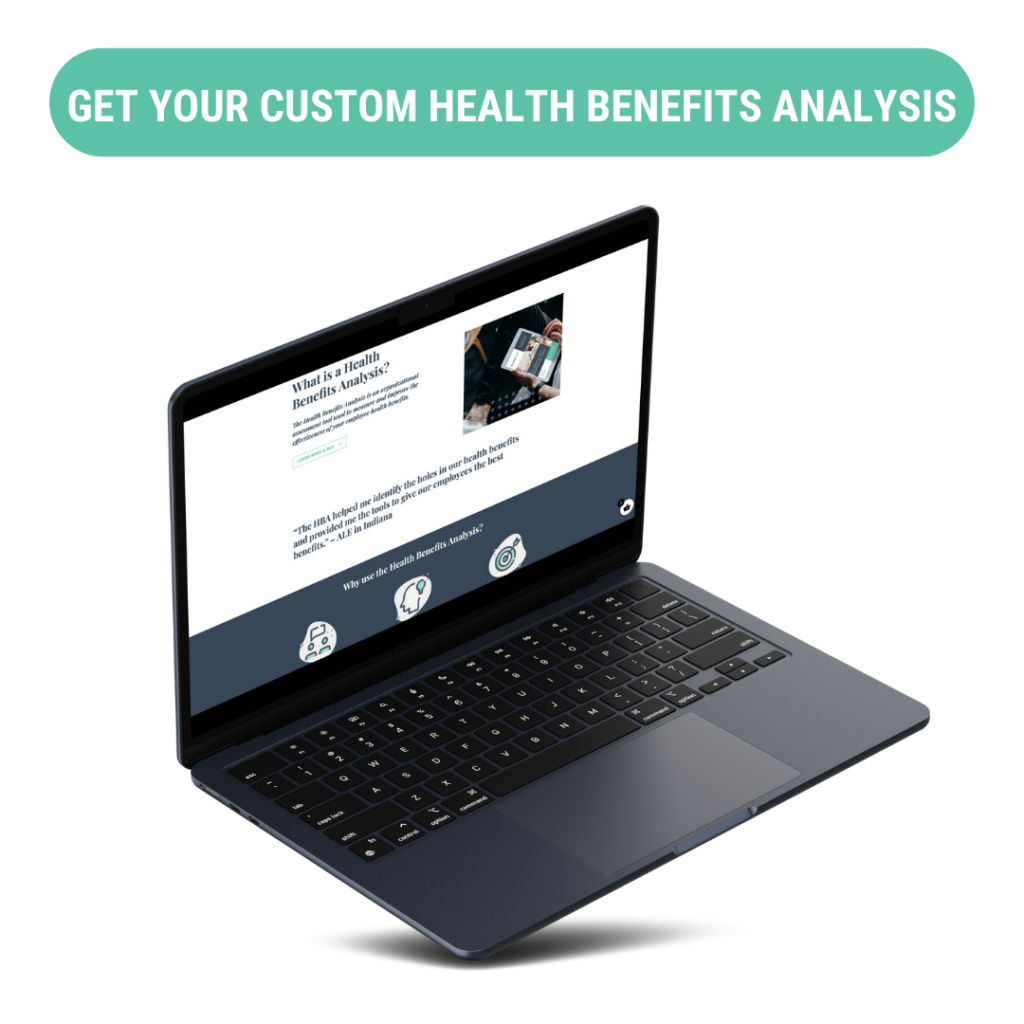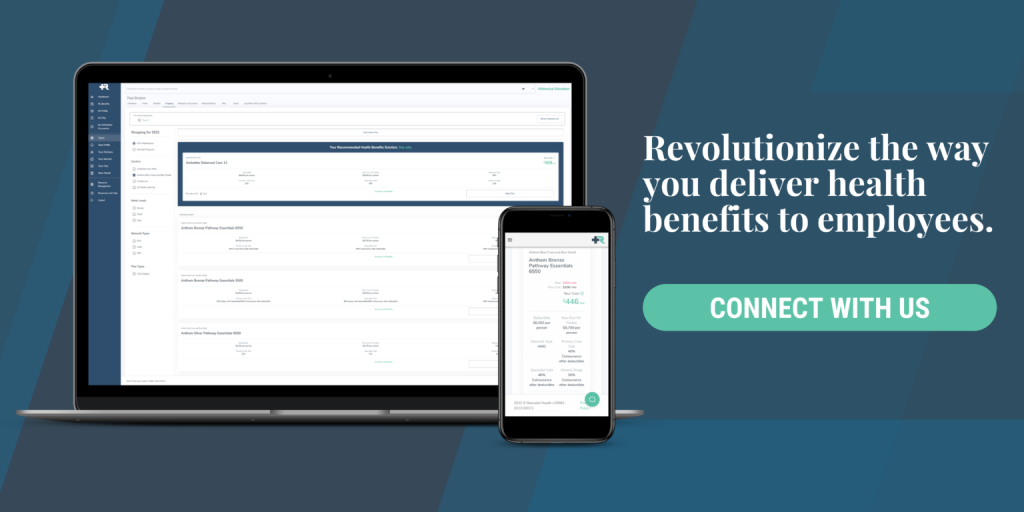President Biden has signed The American Rescue Plan of 2021.
At a high level, the third stimulus gives bigger discounts for health plans and expands who is eligible for them.
The second stimulus already included some helpful healthcare law changes, such as the No Surprises Act, which protects against surprise medical bills. More importantly, it fights directly against the top cause of personal bankruptcies in America—medical expenses. The third stimulus stays right in line with this focus.
But it’s bigger than just individuals. Employers need to understand how they can help their team leverage these law changes so organizations don’t miss out on an incredible opportunity to unlock more resources for their mission without compromising quality healthcare for their people.
Here are the top 3 things all employers need to know about the third stimulus:
1. More Subsidies
Making health plans cost less was fundamental to the Affordable Care Act. It accomplishes this through Advanced Premium Tax Credits (APTC), which go directly from the IRS to the private insurance carrier, providing a discounted plan cost to the individual. These subsidies are available to individuals who do not have any other traditional plans available to them within their household (such as a spousal plan).
The amount of the subsidy is calculated using some key factors, starting with their Federal Poverty Level (FPL), a standardized number used by the government in various ways. FPLs are organized into tiers to determine the limit of total household income that should be spent on health insurance against the silver “benchmark” plan—which is technically the second-lowest cost silver plan available in their zip code.
Example: Family of 4 that makes about $80,000 would be at 300% FPL and would be expected to pay no more than around 10% of their annual income on the silver benchmark plan—their limit is $667 per month. If the silver benchmark is $1,000 per month, they qualify for a subsidy of $333 per month.
The best part of subsidies is that while they are calculated against the silver benchmark plan, they are not tied to it. Which means those subsidies can be spent toward any plan.
Example: Family qualifies for $333 per month in subsidies. They find an HSA plan for $350, meaning they would pay just $17 per month. Or, they select a Platinum plan for $1,200, meaning they would pay $867 per month.
That said, these subsidies do look more like discounts, rather than credits. It is important to have help evaluating the options, since there are actually more products today than ever before on the Marketplace.
The American Rescue Plan has increased subsidies for 2021 and 2022 by lowering the percentage of income limit. It is effective immediately and rolls out as quickly as each impacted government agency can arrange it.
Here is a practical application for the example above. Instead of the limit being around 10%, it would lower to 6% instead—which is only $400 per month. But the silver benchmark is still $1,000, which means the subsidy increases from $333 per month up to $600 per month to bridge the gap.

2. Who Qualifies for Subsidies?
Making health insurance subsidies accessible was also fundamental to the Affordable Care Act. However, there was a problem known as the 400% FPL cliff. This was the spot where all subsidies would stop. This was especially problematic for individuals who hovered right around the 400% level, since even the smallest percent of difference could cost thousands of dollars. (See point 3 below for what would happen in that scenario.)
The American Rescue Plan has removed that 400% FPL limit on subsidies for 2021 and 2022. Instead, they’ve made a limit of 8.5% of total household income that can be spent on the silver benchmark plan.
Example: Family of 2 making $75,000 would be at 435% FPL, and normally would not qualify for any subsidy. But now, they are expected to pay no more than 8.5% of their annual income on the silver benchmark plan—their limit is $531 per month. If the silver benchmark is $1,000 per month, they qualify for a subsidy of $469 per month. This puts $5,628 back into their pocket per year.
According to the national average, the family example above would actually be saving $16,668 per year.
This change will also impact individuals over the age of 50. This is because as an individual gets older, the cost of their insurance product goes up as well—including the silver benchmark. If someone who is 50+ was also just above that 400% threshold, not only did they miss out on subsidies, but they had higher costs as well. Therefore, as the cost of the silver benchmark increases, the amount of subsidies increases proportionally.
3. 2020 Tax Year
A subsidy is just a tax credit that is received in advance. What this means is that it does justify at the end of each year on the individual’s tax return. The insurance carrier sends an IRS Form 1095-A and it is then submitted with an IRS Form 8962 along with their standard IRS Form 1040 (that’s the classic form most of us are familiar with).
While this isn’t always a big deal to true-up, sometimes—especially in the middle of a pandemic—it can deliver a truly devastating financial blow.
Example: A family of 4 in Indiana (ages 35, 35, 10, and 8) had planned to have a household income of $100,000. They applied for an individual plan and received $495 per month in subsidies, which was very helpful for them. However, they didn’t realize the extra $5,000 they made that year would cause so much of a problem. When they filed their taxes, now that they have an actual household income of $105,000, they now owe all of their subsidies back to the IRS. Even though they earned just $5,000 more income for the year, they now owe back nearly $6,000.
The American Rescue Plan has removed the requirement to justify unqualified subsidies for 2020 tax returns. This means in the example above, the individual would not be forced to pay back those advanced tax credits.
Employers Can Leverage These Subsidies
IRS Notice 2015-17, Q&A #4 totally changed the game for group health benefits. Employers asked the IRS if they could cancel their expensive group plans and send their teams to the Marketplace. The problem was that employers would risk their teams not knowing how to find plans.
This is where Remodel Health saw the incredible opportunity to serve.
Since 2015, we have consistently helped organizations serve employees better by discovering more options. By leaving the traditional group model and moving into managed individual plans, employers have been able to experience significant savings (over $30M in total) without lowering coverage. In a nutshell, we help employers and employees experience what’s possible with health benefits.
We help employers unlock and leverage those subsidies to lower the total cost of insurance—whether the organization needs to regain more resources, or they simply want to decrease the burden on their team. These are the subsidies the third stimulus has now increased and made available to even more individuals.
Remodel Health is ready to help even more employers make a big impact on their budgets.
Don’t miss out on this unique opportunity. Start today with an analysis from our expert team of benefits consultants. Schedule a meeting to start controlling your healthcare costs and quality better than ever before.

Important Notice: Remodel Health does not intend to provide specific insurance, legal, or tax advice. Remodel Health always recommends to consult with your own professional representation to properly evaluate the information presented and its appropriate application to your particular situation.
